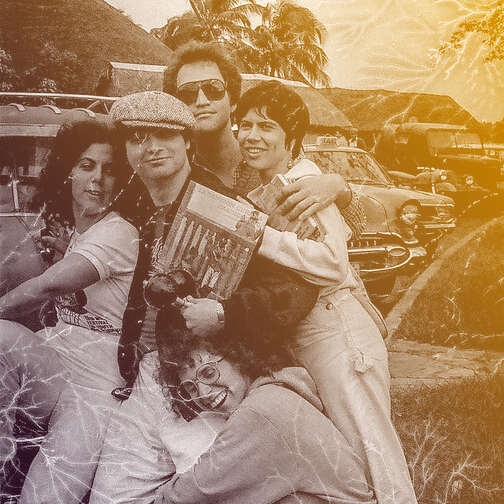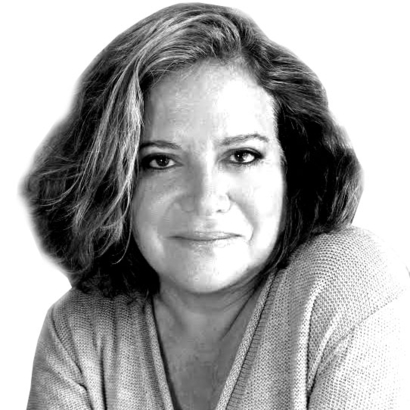A cult is a cult is a cult, and we think we know the signs. There is always a charismatic and power-mad leader with a voracious sexual appetite, like Charles Manson, or Jim Jones, or David Koresh; a remote or easily overlooked location, whether it be a run-down ranch in L.A. County, the jungles of Guyana, or a compound near Waco, Texas; and a hapless collection of lost or vulnerable souls that may include minor celebrities, misfits, and beautiful young women. The recent cult Nxivm, begun by Keith Raniere outside of Albany in 1998, which counted among its members a television actress and a Seagram heiress, fits this pattern.
A cult might start as a self-help group or commune or millenarian sect. Although seemingly hard to comprehend, they lend themselves easily to retrospective analysis. Most of all, they draw in people who are Not Like Us. Or so we like to tell ourselves.
Alexander Stille’s The Sullivanians: Sex, Psychotherapy, and the Wild Life of an American Commune upends these notions, even if the author does not use the word “cult” in his subtitle. It tells the mesmerizing and harrowing story of the Sullivan Institute for Research in Psychoanalysis, which sprang up in the late 1950s, a decade before the flowering of the counterculture, in a town house on the Upper West Side of Manhattan and was dissolved in 1991. At its height, the group counted around 600 members. Stille’s artfully structured account reads like a suspenseful psychological thriller or, as it may be, a baffling cautionary tale. (The group is also the subject of a forthcoming documentary series called The Fourth Wall, produced by Keith Newton, the son of the Sullivanians’ leader.)

The institute was founded by a married couple, Saul Newton and Jane Pearce, at a cultural moment when psychoanalysis—The Triumph of the Therapeutic, as Philip Rieff called his seminal book—was at the peak of its influence. Newton and Pearce were disciples of an unorthodox psychoanalyst named Harry Stack Sullivan, who in 1943, along with Erich Fromm and Frieda Fromm-Reichmann, co-founded the highly regarded William Alanson White Institute. (Fromm-Reichmann was the model for the nurturing therapist in I Never Promised You a Rose Garden.) Sullivan believed that the nuclear family was inimical to mental health and instead favored same-sex friendships, or what he called “chumship.”
Newton (né Saul Bernard Cohen) was born in 1906 in New Brunswick, Canada. Stille describes him as a “fabulist,” someone “whose shadowy biography is a blend of myth and fact, a kind of Jay Gatsby of psychotherapy.” Newton had a rancorous, violent childhood; he insisted that his mother had tried to kill him and that he eventually came to blows with his tyrannical father. He carefully crafted an impeccable left-wing identity, joining the American Communist Party after attending the University of Wisconsin, and telling people that he had fought in the Spanish Civil War. Something of a ladies’ man, with “dark, soulful eyes,” he had put three wives behind him when in 1948 he married Jane Pearce. (He would eventually marry six times and father 10 children.)
Unlike Newton, whose affiliation with the White Institute was unclear—he appears to have worked in the bursar’s office—and who had no formal instruction in psychoanalytic technique despite telling people that he had been in therapy with Fromm-Reichmann (the veracity of this story being characteristically questionable), Pearce was a bona fide psychoanalyst with an M.D. from the White Institute.

The couple had three children in quick succession and led a comfortable life, buying a West 77th Street town house with Jane’s inherited money, and building a house in Amagansett. In 1957, after breaking with the White Institute, which they viewed as insufficiently radical, they established the Sullivan Institute in their town house, with Newton in the role of director and Pearce as associate director.
Newton and Pearce would go on to co-author the 1963 book The Conditions of Human Growth, which elucidated their views on the toxicity of family life, the imperative of avoiding “dependency” in relationships, and the necessity for defying parental and societal expectations. “Successful analysis,” they wrote, “involves becoming accustomed to revolution.” Five years before the upheavals of 1968, Newton and Pearce had figured out that everything—including Sullivanian theory, with its timid, retrograde embrace of marriage—was ripe for change.
Stille describes him as a “fabulist,” someone whose “shadowy biography is a blend of myth and fact, a kind of Jay Gatsby of psychotherapy.”
Early enthusiasts of the couple’s anti-conformist and hedonistic approach to personal growth, which advocated drinking and multiple sex partners—the latter often leading to forced promiscuity—included the art critic Clement Greenberg and the painter Jackson Pollock, who cottoned to his therapist Ralph Klein’s concept of the malevolent mother and began referring to his own mother as “that old womb with a built-in tomb.”
The painter Jules Olitski, another of Greenberg’s favorites, moved from Bennington, Vermont, to New York so his whole family could go into Sullivanian therapy. Soon, every member of the family—including Olitski’s 10-year-old daughter—was made to live apart from the others, in accordance with the Sullivanian conviction that parents not raise their own children. (The children of Sullivanians were either sent off to boarding schools or given to unrelated members.)

Other creative types who were attracted to the institute’s free-flying, heterodox glamour in its early period were the dancer Lucinda Childs, the writer Richard Price, and the painters Kenneth Noland and Larry Poons. The singer Judy Collins was also drawn to the group’s message and remained in Sullivanian therapy for years, although she never lived in one of the communal New York apartments that housed many of its members.
In later years, the Sullivanians became instruments of the increasingly monstrous Newton’s imperious whims, which included sex on demand from his and other therapists’ patients. (Newton dumped Pearce and then sidelined her to such an extent that she ceased being a player in the group’s baroque hierarchy.) Groupthink and groupspeak—getting into a “focus,” “distancing maneuver,” “hostile integration”—abounded, all with the express purpose of keeping members, who included at various times a physicist, a graphic artist, a former Catholic seminarian, a female professor of anthropology, and several medical doctors, on uncertain footing and without a secure monogamous attachment. (Members were allowed only one romantic date a week, and women were often discouraged from having children.)
Men and women were housed separately in group apartments, their activities monitored to ensure that they were toeing the line and not spending too much time on their own. At weekly house meetings, a member could be savagely dressed down for some perceived infraction or failure to abide by the group’s increasingly restrictive and controlling code of behavior and be summarily expelled without a friend in the outside world.
During the mid-1970s the Sullivanians, at the prompting of Joan Harvey, Newton’s fifth wife, created a polygamous theatrical troupe named the Fourth Wall, which became yet another venue for internecine battles. Harvey then edged out the troupe’s director, Luba Elman, a therapist and former actress who had been running it with some success. (An original play, Don’t Stand in the Doorway, written by a group member, was reviewed, albeit mostly unfavorably, in The New York Times.)
Elman had been forbidden by Newton to have a baby with the man of her choice. After she was accused of stealing a pottery kiln (“Only in a lefty group,” Stille interjects, “would someone be accused of stealing a pottery kiln”) and dropped from being listed as the troupe’s producer, Elman left for California, where she died of cancer a little more than a year later. Newton had prophesied that she would come to a quick end after leaving the group, which only added to his towering, all-knowing image among his followers.

In 1979, following the meltdown at Three Mile Island, a paranoid Newton and his sixth wife, Helen Moses, left town, and a large group of Fourth Wall members decamped to Orlando, Florida, where Newton ordered the creation of a nuclear “monitoring team” and a security detail to protect the theater troupe.
The early 80s saw growing dissent within the group over issues of autonomy and child custody. A suit filed by “Chris H.” against Marice Pappo, an institute therapist, for custody of their daughter, Jessica, brought the Sullivanians adverse publicity, including a cover article in The Village Voice that painted what Stille calls “an overwhelmingly negative portrait” of life inside the group. Other custody suits followed, signaling the gradual erosion of Newton’s stature in the eyes of his followers. He died in 1991, and the institute closed its doors, after 29 years of conducting its cultish business of regulating “the most intimate aspects of their patients’ lives, including dating, child-rearing, working, eating and sleeping” right in the middle of Manhattan.
Stille has probed deeply into the improbable background of the Sullivan Institute, with its mishmash of Marxist sentiments, anti-Establishment bromides, and fringe psychoanalytic theories, and meticulously researched former members of the group, including a small number who still sing its praises. The overwhelmingly stark impression his account leaves is that people will do anything to ward off loneliness and to belong somewhere—anywhere.
Although Stille’s writing is occasionally slack and the story a bit repetitive (there were times when I felt that the book would have worked equally well as a piece of “long-form” journalism of the sort that ran in the old New Yorker), The Sullivanians tells a disturbing story, one that is hard to look away from and even harder to forget.

The Sullivanians: Sex, Psychotherapy, and the Wild Life of an American Commune, by Alexander Stille, is available at your local independent bookstore, on Bookshop, and on Amazon
Daphne Merkin is a Writer at Large at AIR MAIL and the author of numerous books, including the memoir This Close to Happy: A Reckoning with Depression and the novels Enchantment and 22 Minutes of Unconditional Love. She is currently working on a book about her experiences in psychoanalysis


